The seasons have always been a huge source of inspiration for me. When summer fades to autumn, or when winter warms into spring, these transitions are one of the most exciting times of the year. For it is during these shifts in our surroundings that I find my mind is the most inspired, bursting with all manner of ideas of what I could potentially create that will capture the essence of the season at hand. Arriving in Greece at the beginning of spring has left me especially inspired by the abundance of flora consuming every corner of our village. Wisteria blooms waft through the evening air, honeysuckle vines sweeten the breeze, and rose bushes tumble from almost every plot. . .flowers are a way of life here.
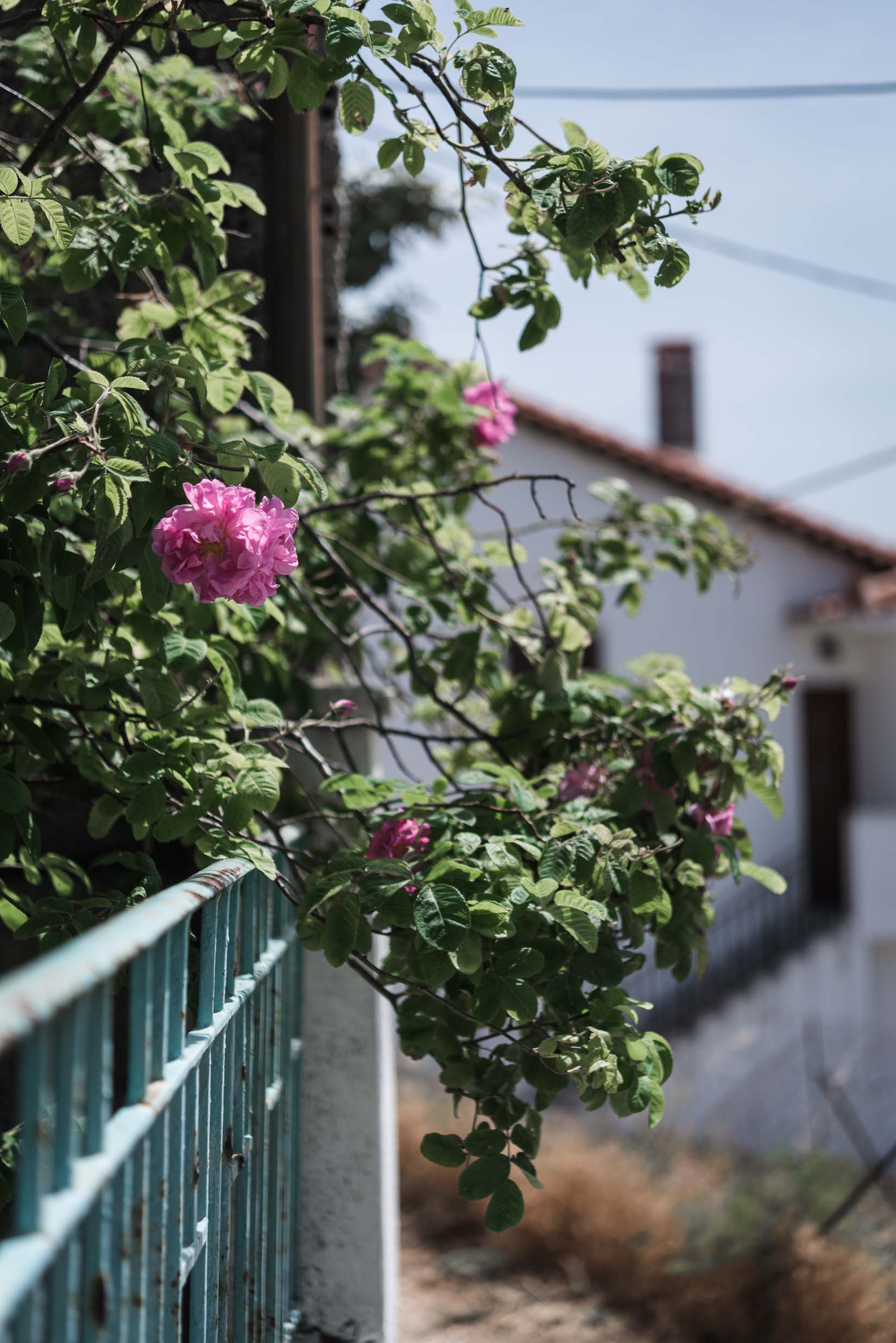
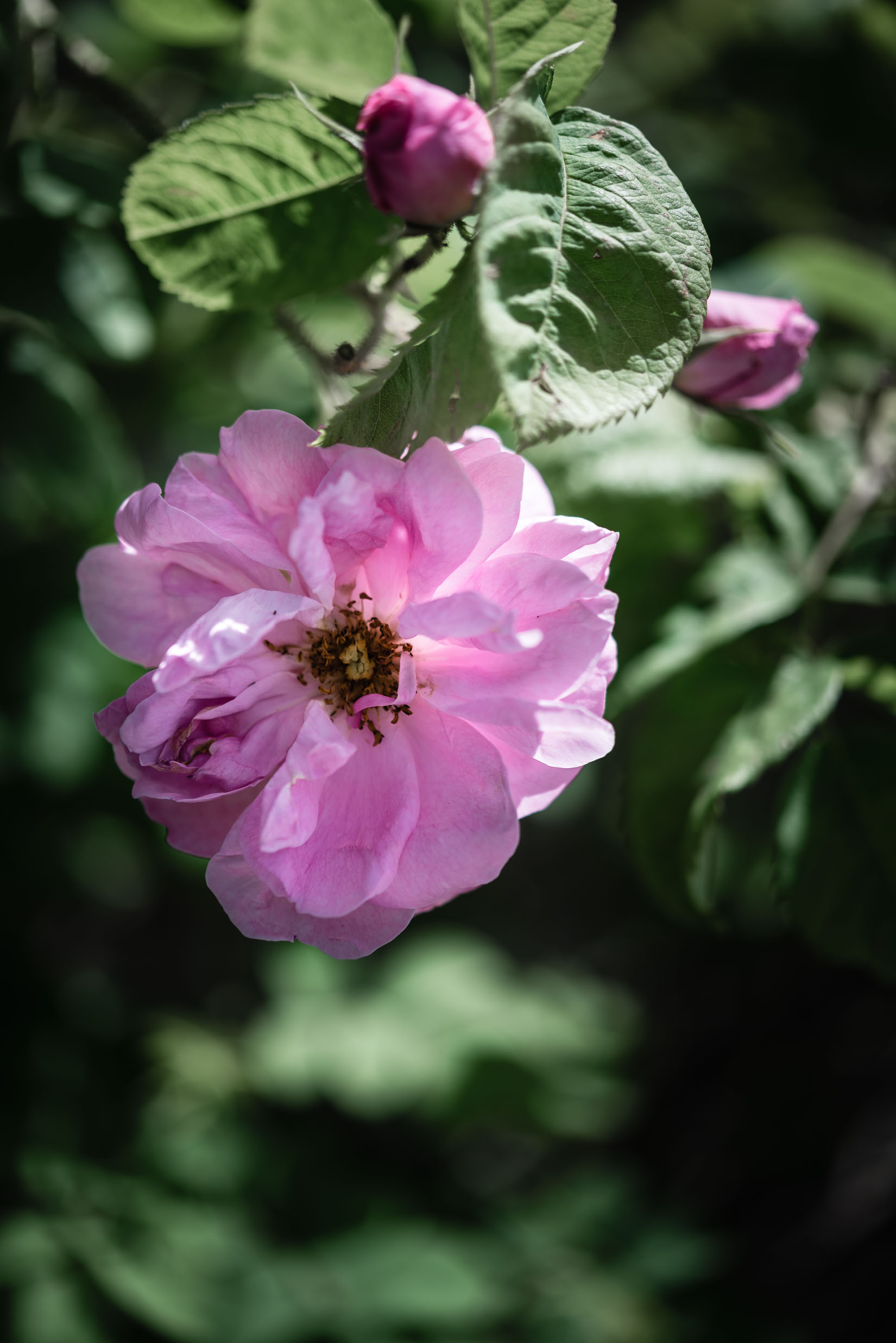
We have two little old neighbors that are both named Tasoúla. . .and it just so happens that each of them practice the daily routine of gathering damask roses to place in jars to make sun-distilled rosewater, known in Greek as ροδόσταμο (ro-DOH-sta-mo). Depending on what region of Greece you are in, the types of flowers collected and used to make blossom water will vary. Here in our village it is all about roses, but not just any rose, specifically damask roses – which are renowned as the most fragrant of roses and are used exclusively for making sun-distilled rosewater here in our village.
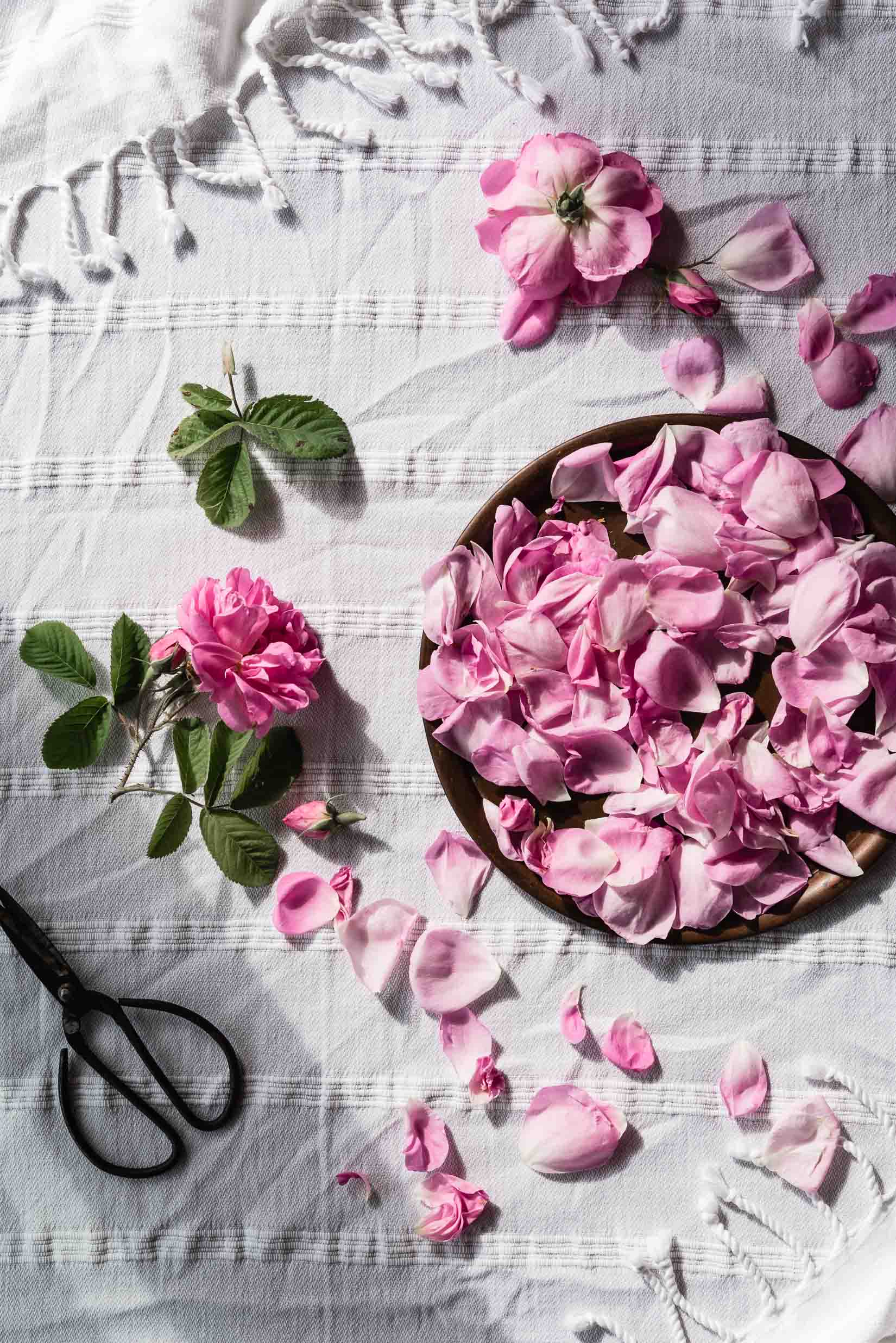
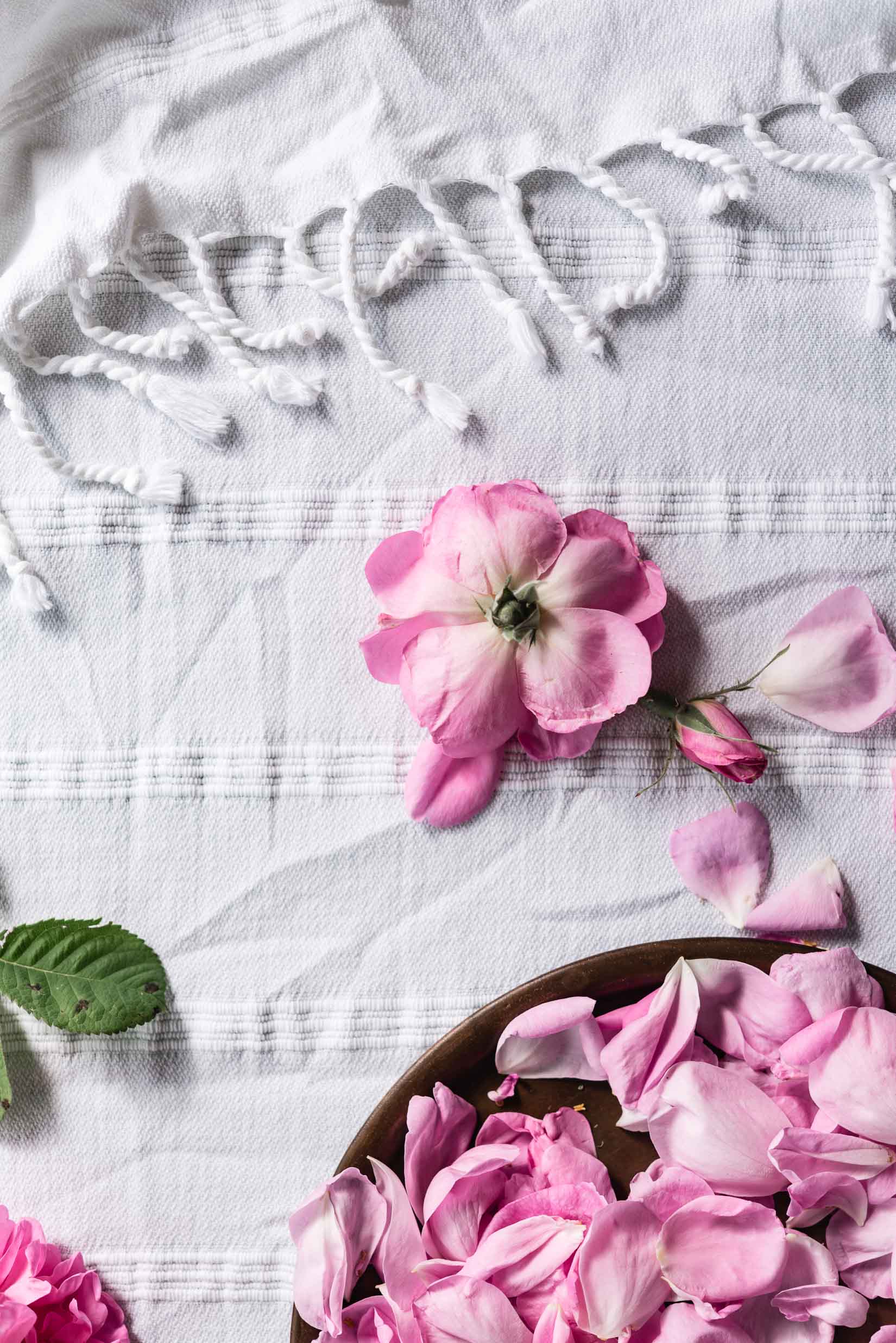
There are two methods practiced here on the island to extract the essence of the roses: one consists of loosely packing rose petals in tulle, securing the bundle of tulle & roses into a glass jar with a lid and then placing the jars in the sun to distill. The more time consuming method (and the ancient way that women used to practice) consists of threading the individual rose petals onto a string, hanging the rose petal garlands in glass jars with lids and then placing the jars in in the sun. Either method is successful at producing sun-distilled rosewater, but the garland method is believed to be superior as the rose petals get more even exposure to the sun and, therefore, produce a more consistent end product.
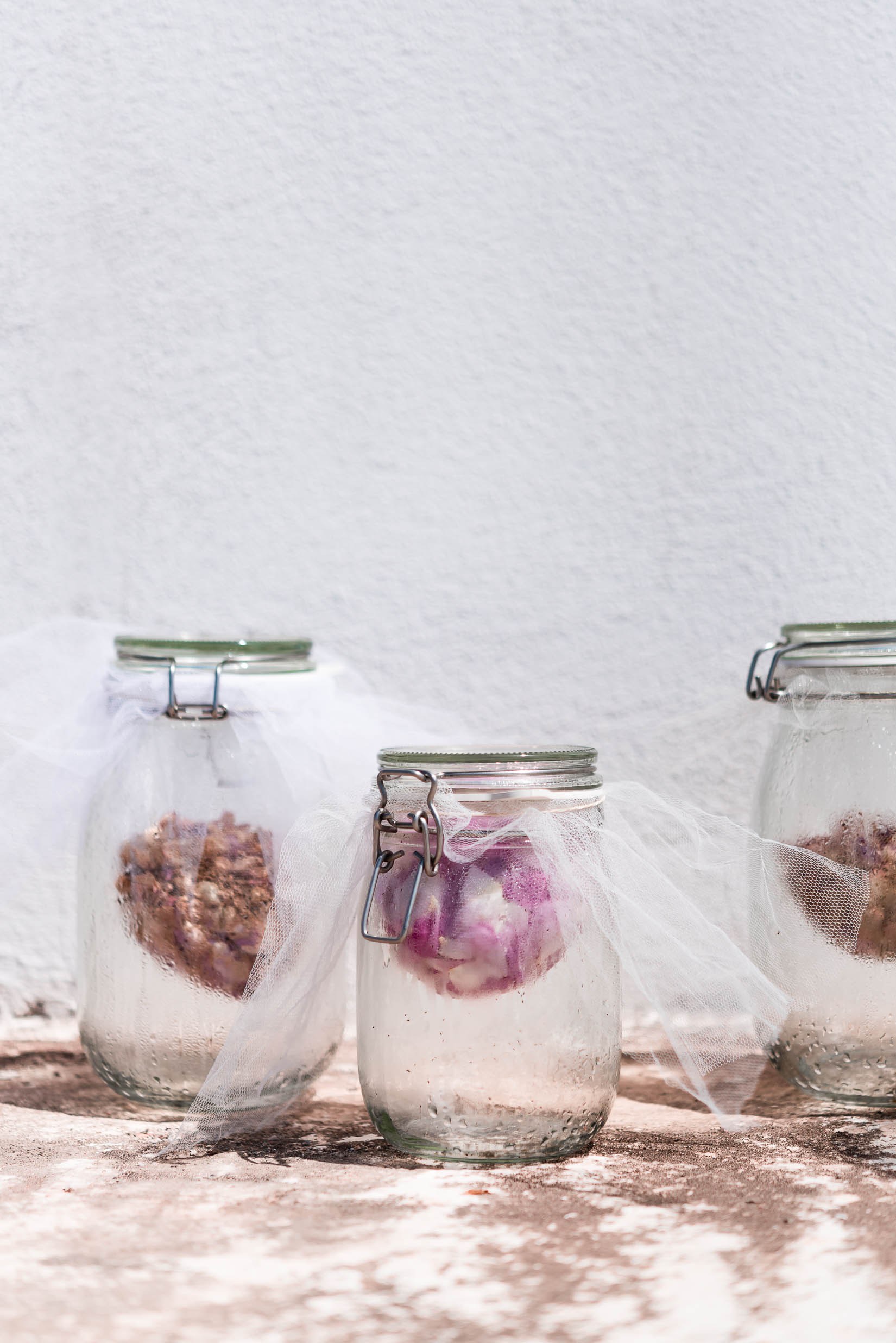
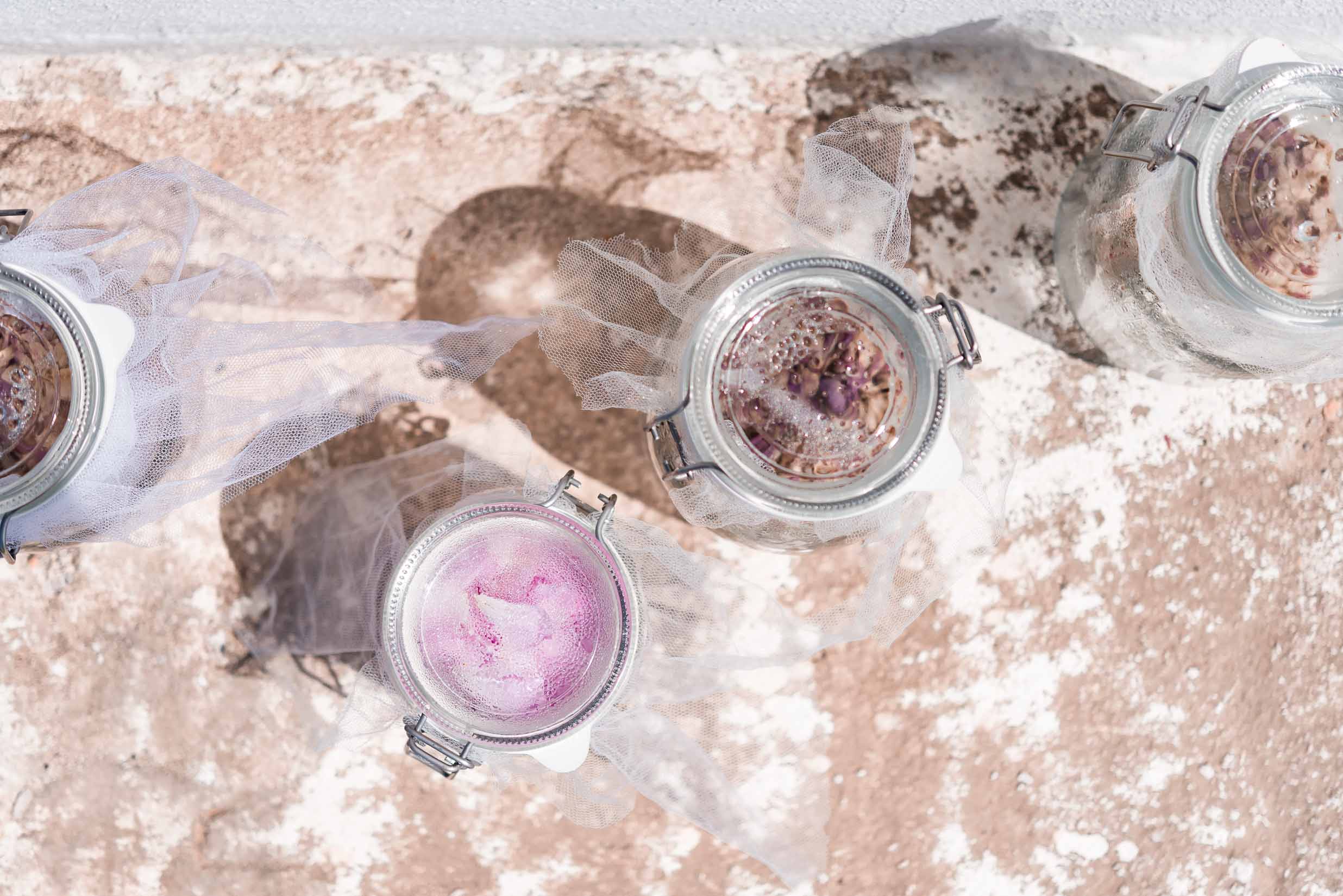
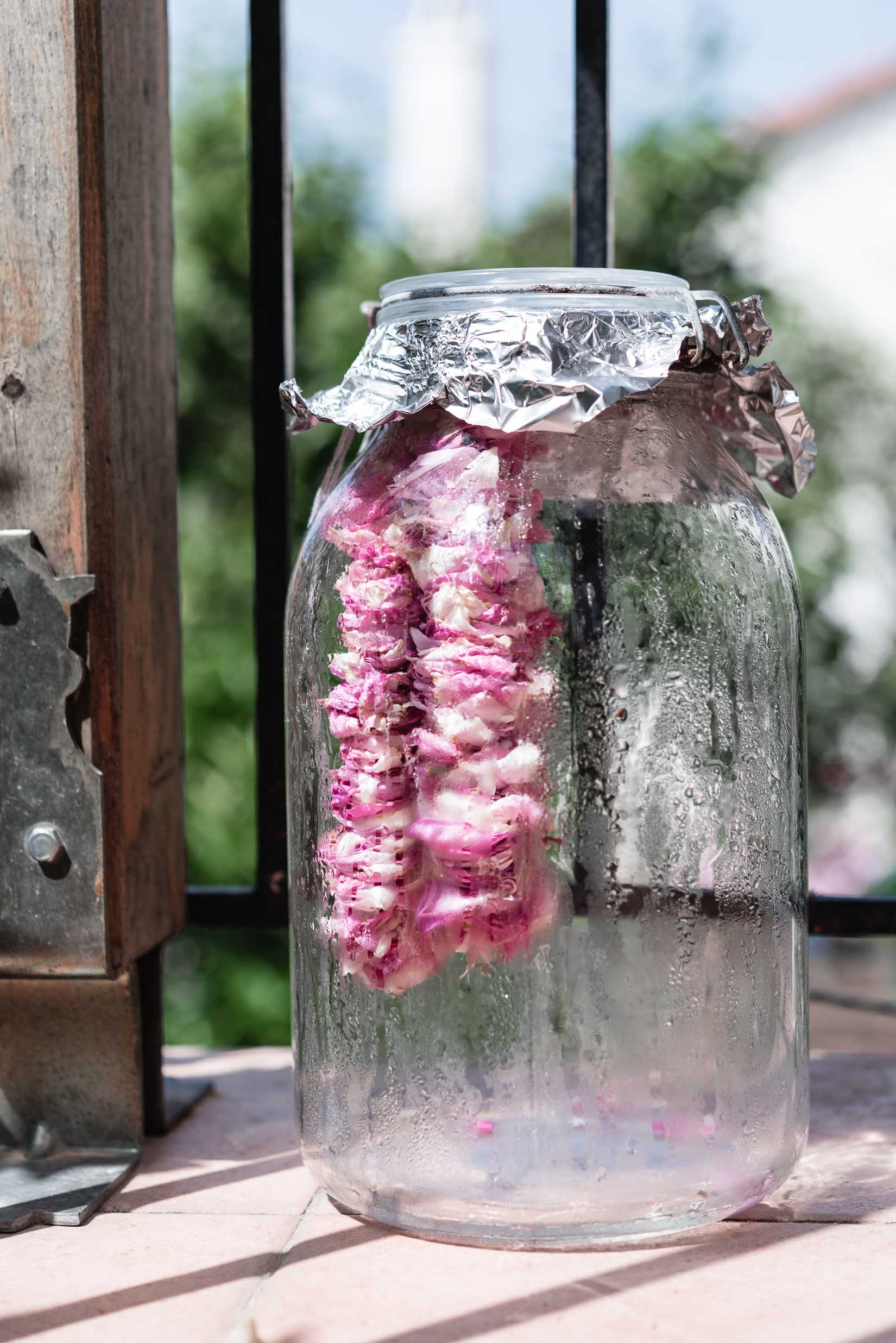
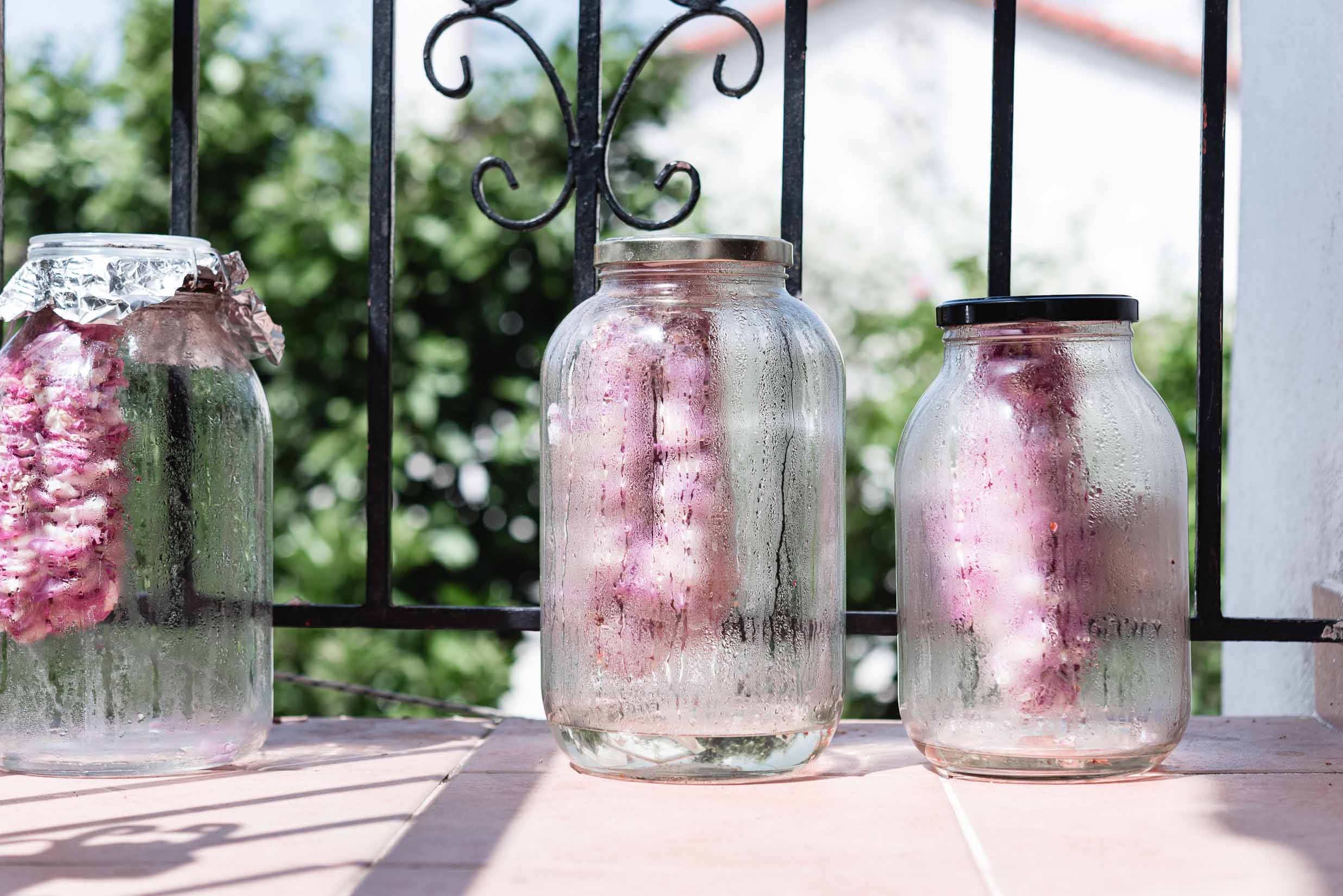
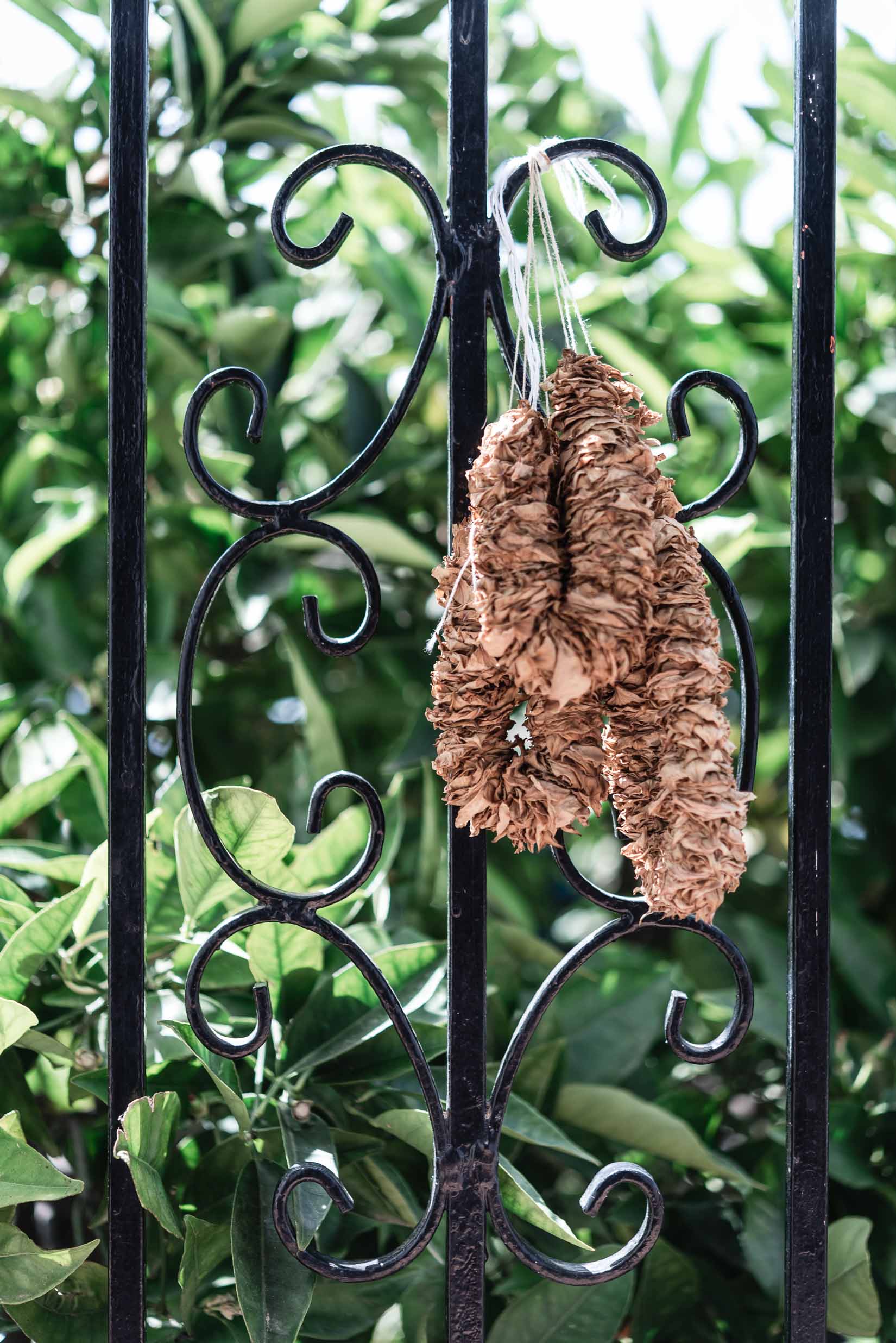
Each Tasoúla was more than generous in sharing everything they knew about making rosewater with me, even giving me tulle and rose petals so that I could document each process to share with you all. I was only able to make a small amount of rosewater because I do not have access to my own damask rose bush and any bushes that I happened to come across on my daily walks were already claimed by someone (of course!) Which leads me to the point that making sun-distilled rosewater is a process that is done over the course of many days. It becomes a part of your daily routine, especially if you are fortunate enough to have access to a very fragrant rose bush. It is a simple process that requires nothing more of you than taking a bit of time to gather roses each morning while they are at their peak fragrance and then letting the sun do the rest of the work.
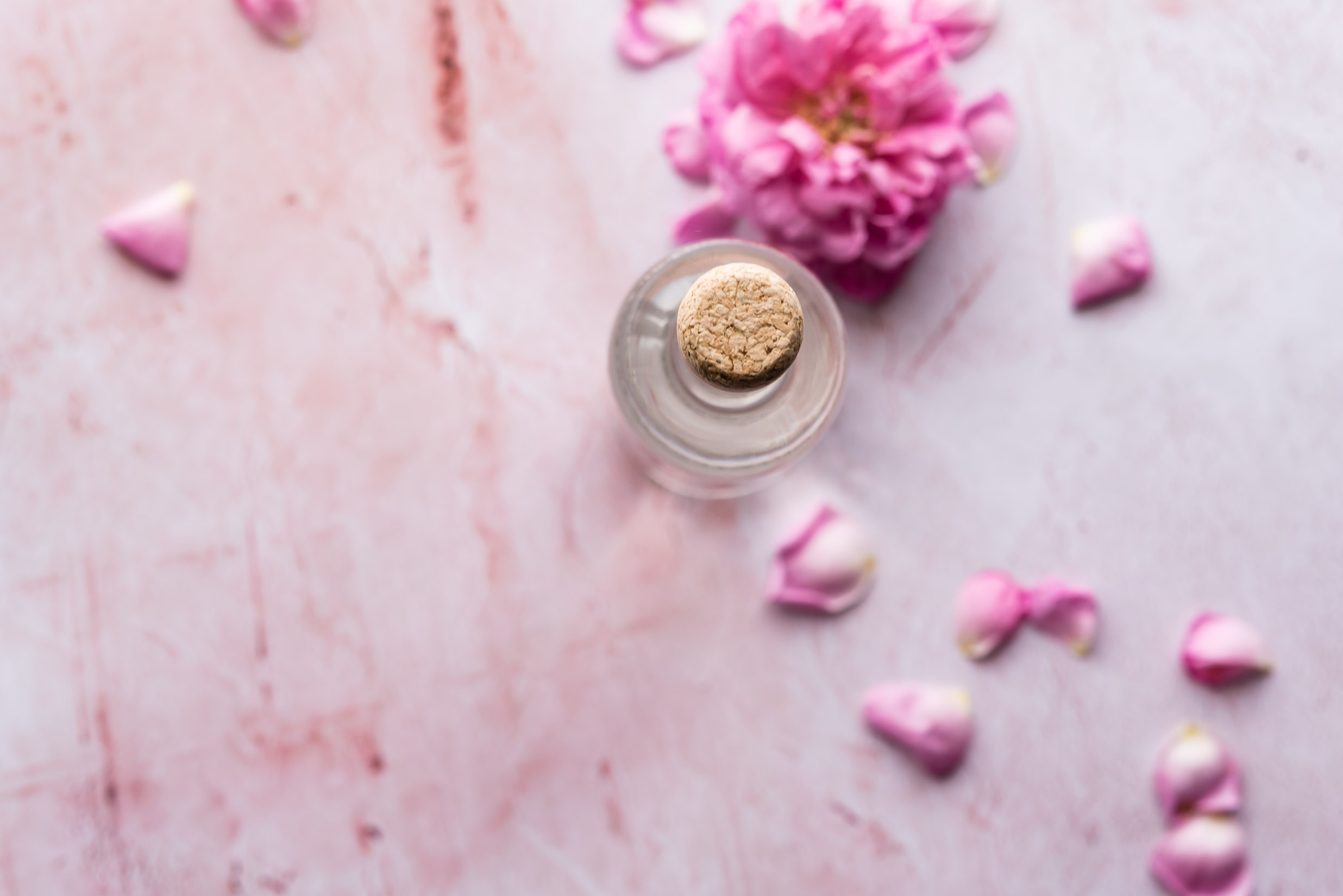
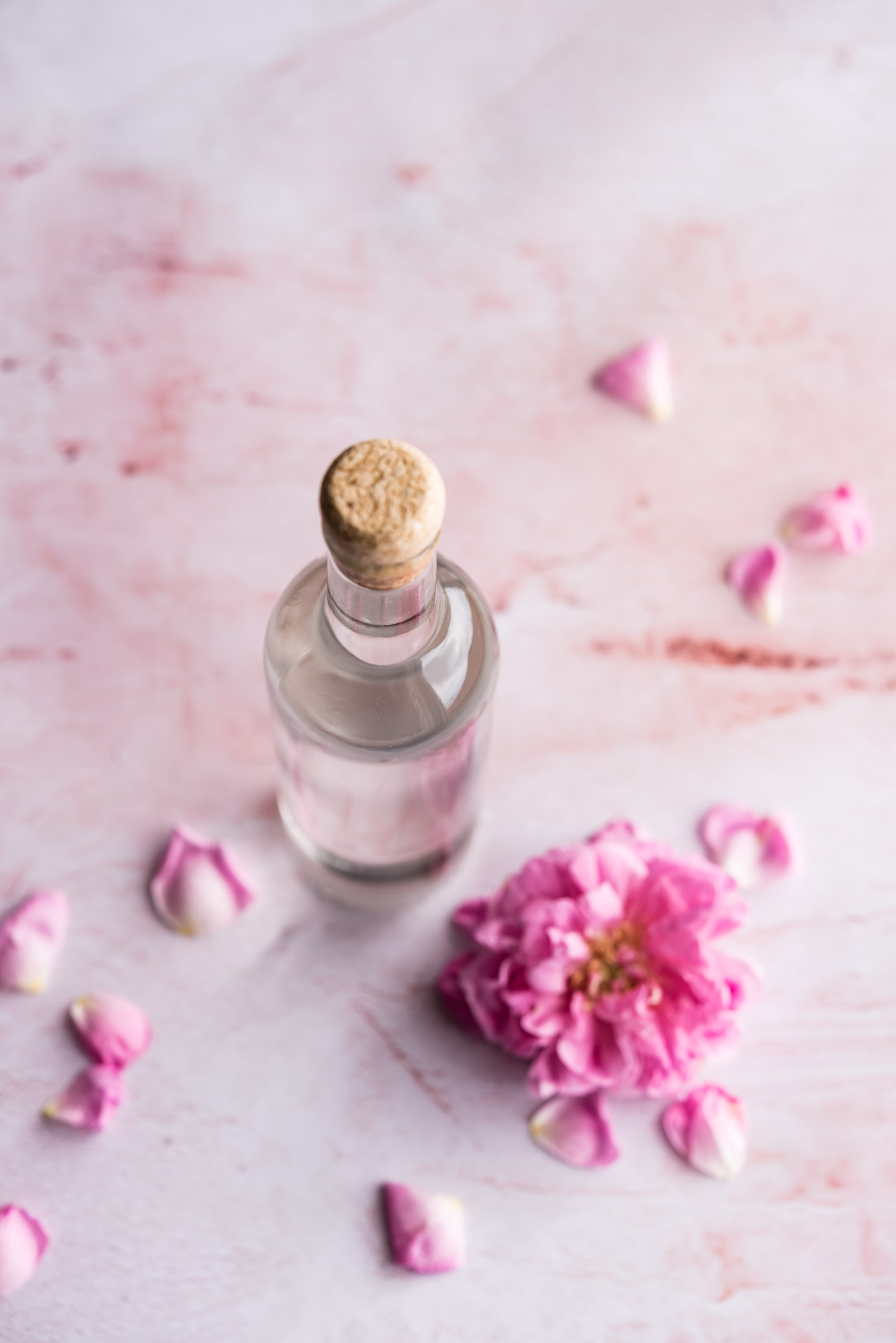
The uses for rosewater are endless – a quick google search for rosewater will yield all manner of inspiration. Here on the island rosewater is primarily used for αμηγδαλοτά (ah-meeg-da-lo-TAH), a traditional Greek almond flour cookie, which I hope to eventually share the recipe for here on the blog. Rosewater also makes for a beautifully fragrant perfume and is considered a mood enhancer. When used as skincare, rosewater helps balance the skin’s PH, can reduce redness and irritation, tighten pores, and helps cool & soothe hot skin.
In the meantime, if you have access to some very fragrant roses, (you are especially fortunate if you can find damask roses), I would encourage you to give sun-distilled rosewater a try! It is a beautiful process that yields an exceptional traditional ingredient that will add the most lovely floral essence to whatever you make with it.
I have a recipe that uses our freshly made sun-distilled rosewater that I am working on publishing to the blog very soon. . .so stay tuned! And if you have any favorite ways to incorporate rosewater into your recipes, I would absolutely love to know!
SUN-DISTILLED ROSEWATER
Ingredients
- copious amounts of very fragrant fresh picked roses ( damask roses are extremely fragrant )
- 18“x18” pieces of tulle ( or a needle + thread for the garland method )
- glass jars with tight sealing lids + rubber bands
Instructions
TULLE METHOD:
- make sure that the roses you use are fresh, organic and pesticide free
- start by pulling the rose petals off of the stems by grabbing the petals with one hand & pulling the stems away from the petals with your other hand
- once all of the petals have been removed from the stems, loosely pack them into a piece of tulle, gathering up the edges ( I used about 2 cups of petals per piece of tulle )
- Place the petal filled tulle inside a large glass jar, allowing the edges of the tulle to overlap the opening of the jar by at least 2 inches & use a rubber band to secure the tulle to the jar opening – ensure that there is at least 2 inches of space between the bottom of the petal filled tulle and the bottom of the glass jar.
- Secure the lid of the jar and leave in a place that will get the most direct sunlight possible ( we placed our jars on our rooftop ) otherwise, move them throughout the day so that they get as much sun as possible.
- After 2 days, all of the petals should have turned light brown and the jars should be filled with condensation and a puddle of rosewater at the bottom.
GARLAND METHOD:
- make sure that the roses you use are fresh, organic and pesticide free
- start by pulling the rose petals off of the stems by grabbing the petals with one hand & pulling the stems away from the petals with your other hand
- once all of the petals have been removed from the stems, use a needle and thread a top a soft pillow to pierce through the center of each petal, one by one, stringing them into a garland
- thread garlands long enough to fill the vase leaving at least 2 inches of space between the bottom of the garland and the bottom of the glass jar.
- Secure the ends of the garland with the lids of the glass jars, and leave in a place that will get the most direct sunlight possible ( we placed our jars on our rooftop ) otherwise, move them throughout the day so that they get as much sun as possible.
- After 2 days, all of the petals should have turned light brown and the jars should be filled with condensation and a puddle of rosewater at the bottom.
COLLECTING & STORING THE ROSEWATER:
- Gather your jars, remove the spent rose petals and gently swirl the jars to collect all of the condensation from the sides of the jars.
- Once all of the rosewater has settled to the bottom of the jars, pour the rosewater through a very fine mesh sieve or dampened cheesecloth into a spouted bowl or measuring cup ( this filters any impurities from the rosewater )
- Pour filtered rosewater into a glass jar with a tight fitting lid and store in the refrigerator
- Sun-distilled rosewater stored in the refrigerator should last up to one year
- *Approximately 8 cups of loosely packed rose petals produced about 75ml (1/3 cup) of rosewater

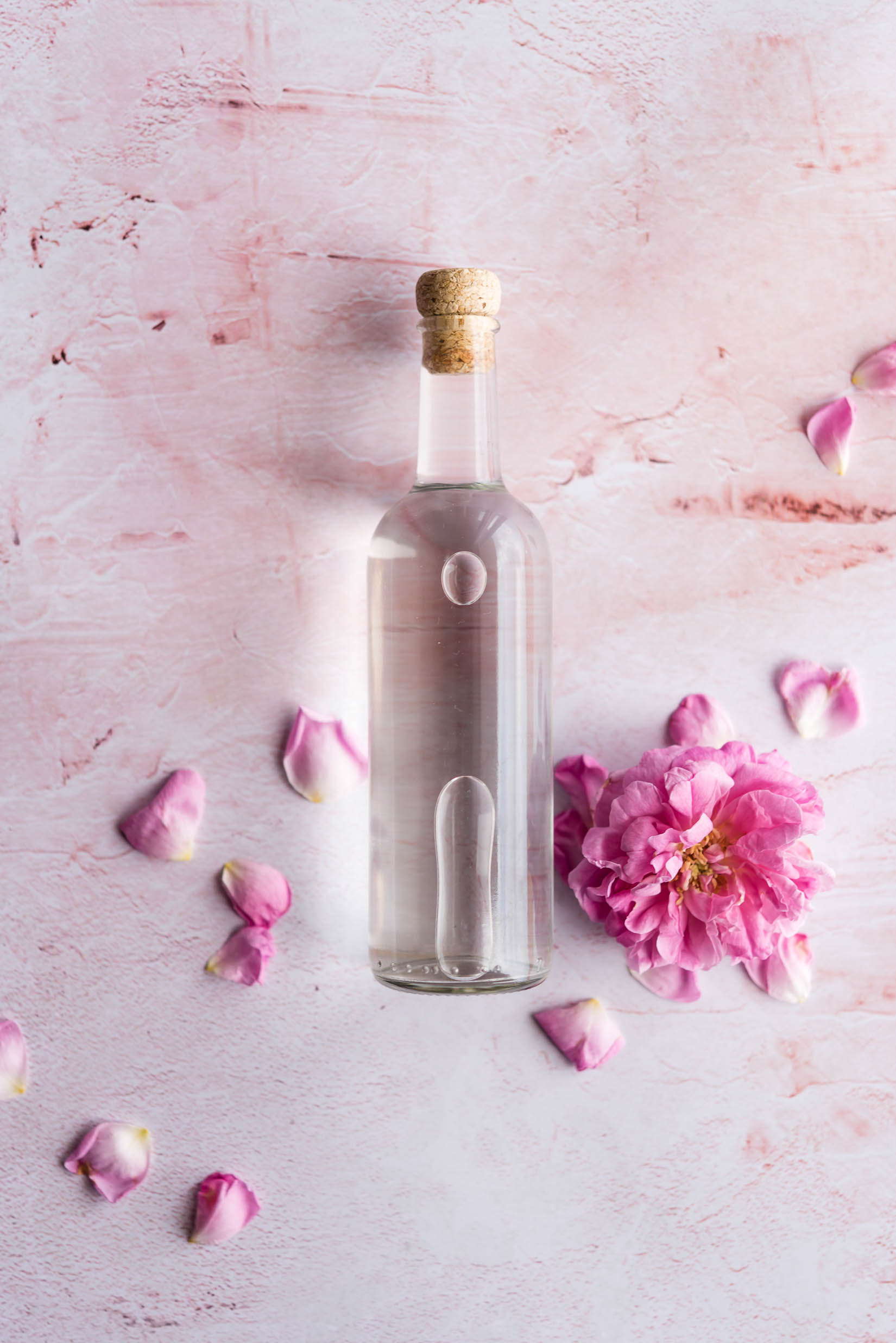
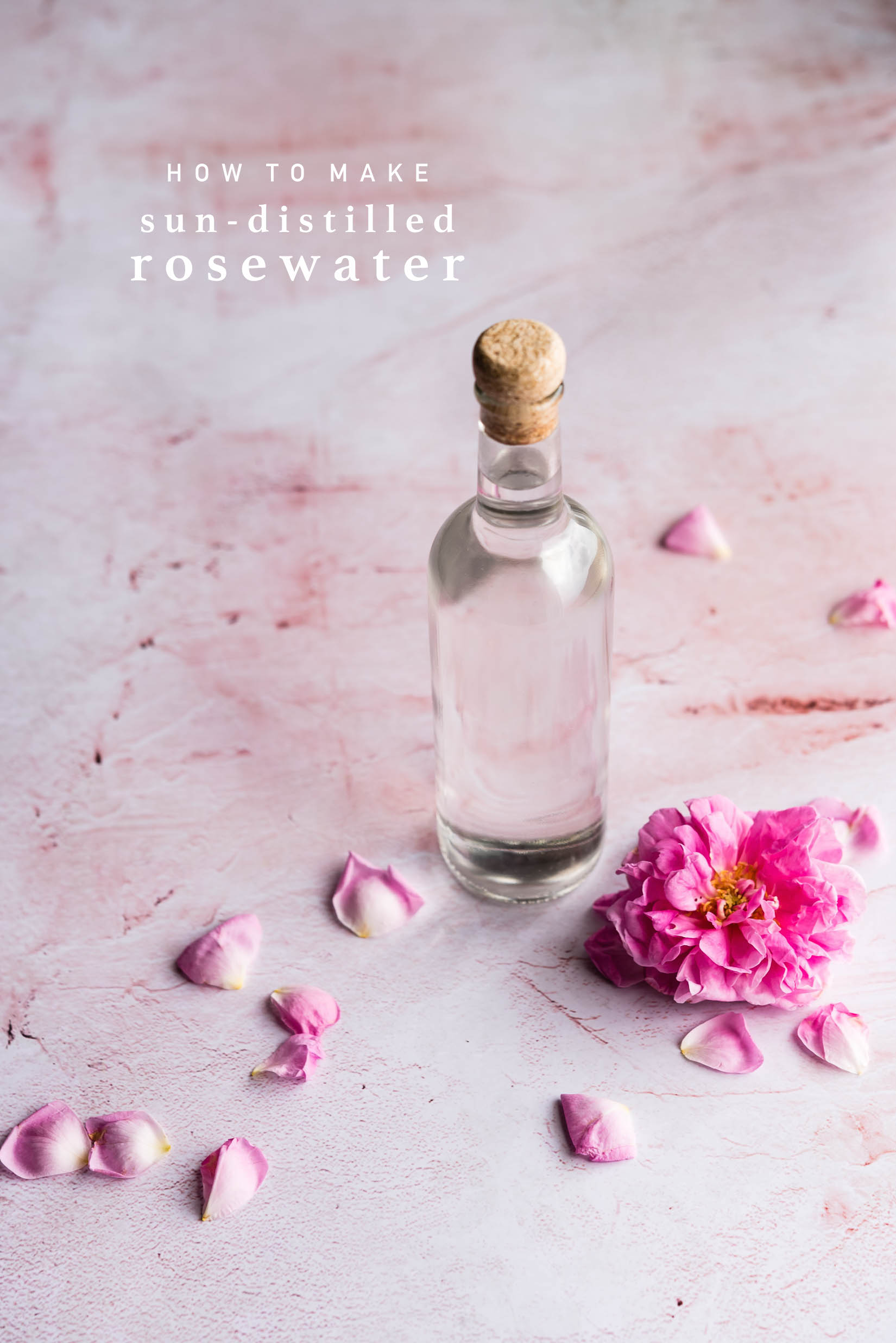

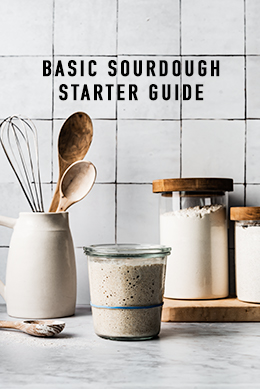







WOW WOW WOW!!!!!!!
Your photography and style is So Stunning!!!
I absolutely LOVE that you are reviving all these time honored Greek traditions, so BEAUTIFUL!!
this post reminds me of my pro-yiayia, she lived to 107 years, she used to make her own antho nero and use it for baking, bathing, and perfuming as well also. SO freakin cool of you, these ancient traditions will die with our yiayiathes if people like you do not pick up the mantle and carry them on!!!
THANK YOU THANK YOU THANK YOU!!!!!!!!! Xilia Euxaristo!!!
Great contribution to the humanity. I learnt from you . Hope more learn and get benefited. Thankyou
Thank you very much :)